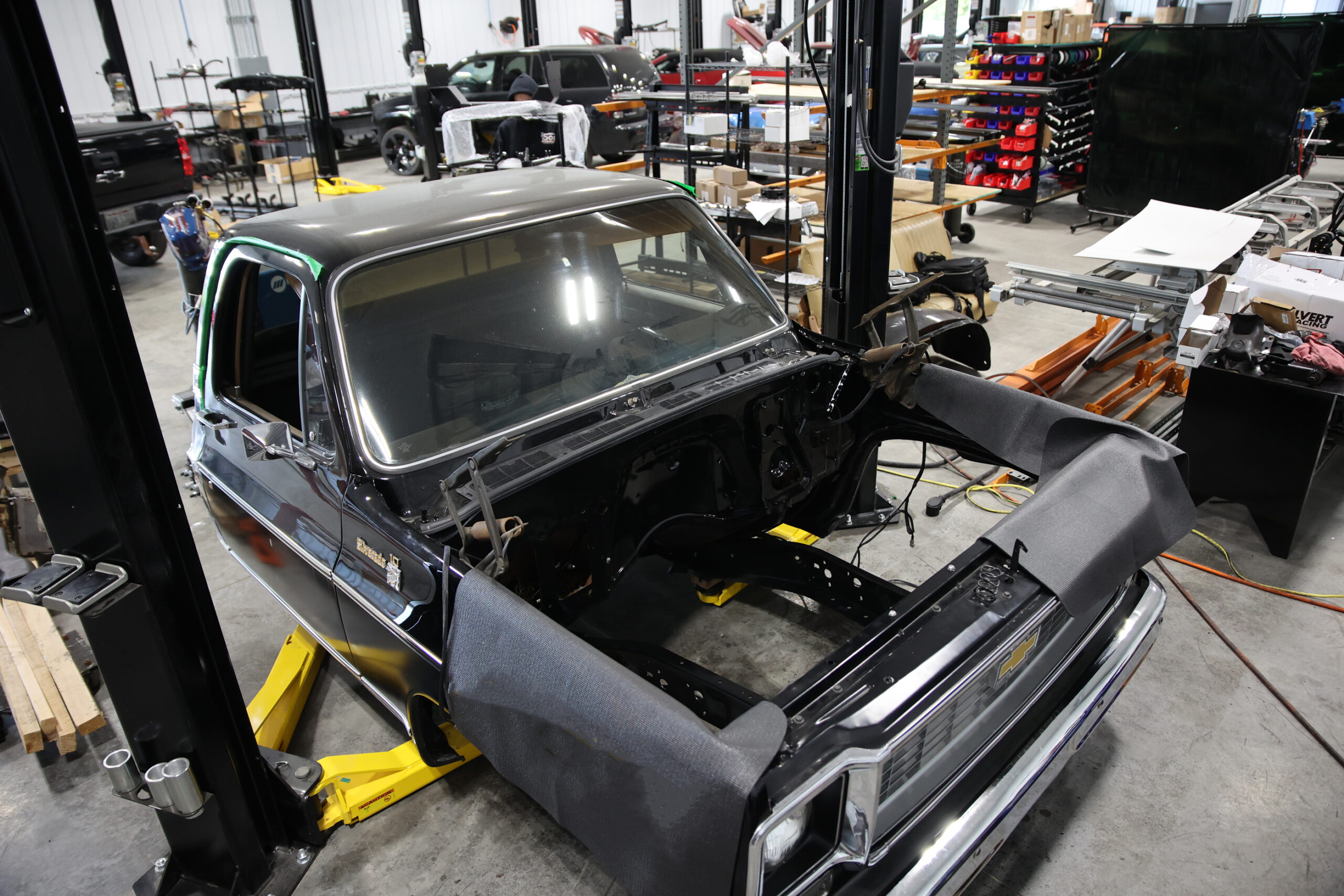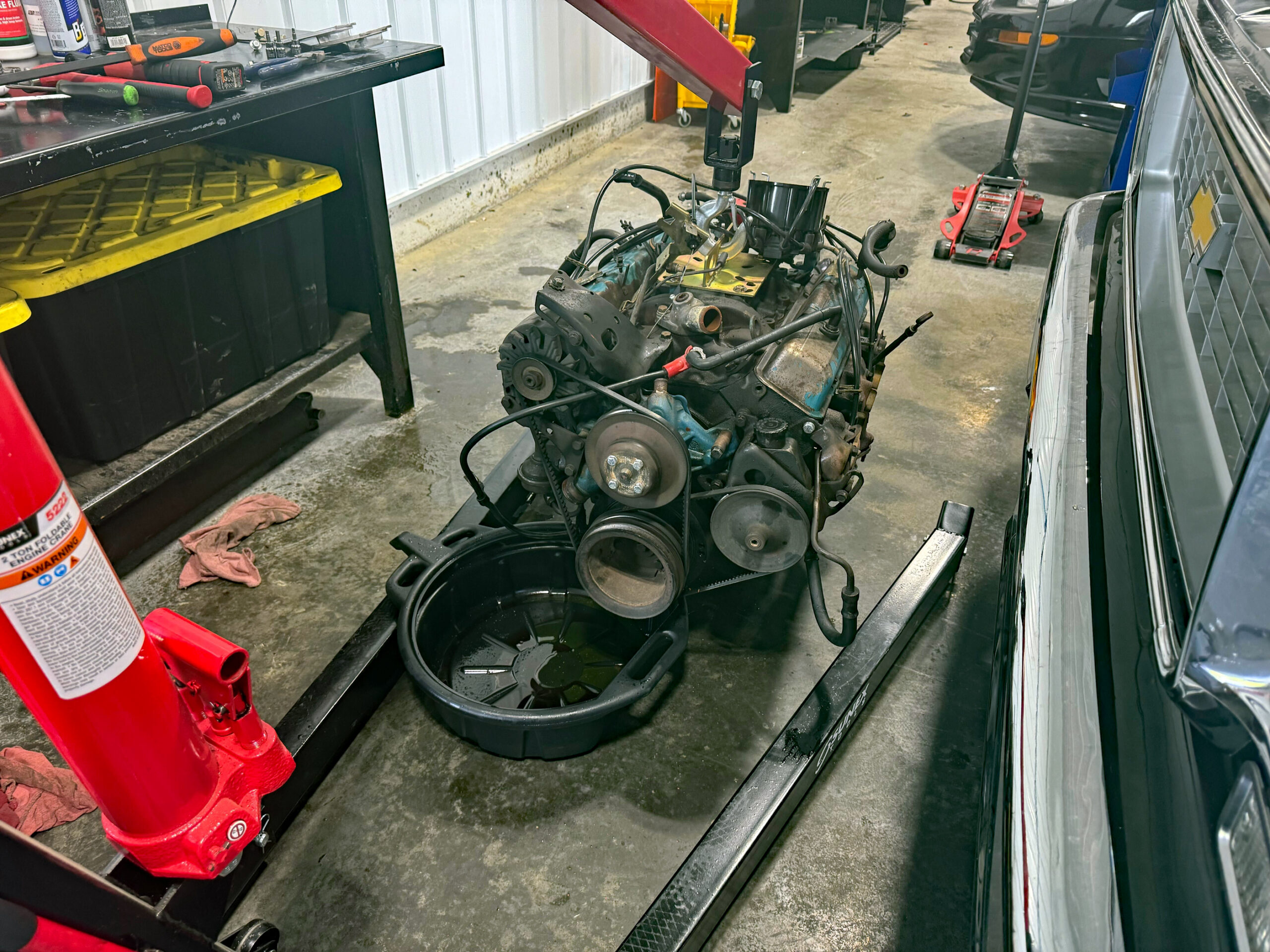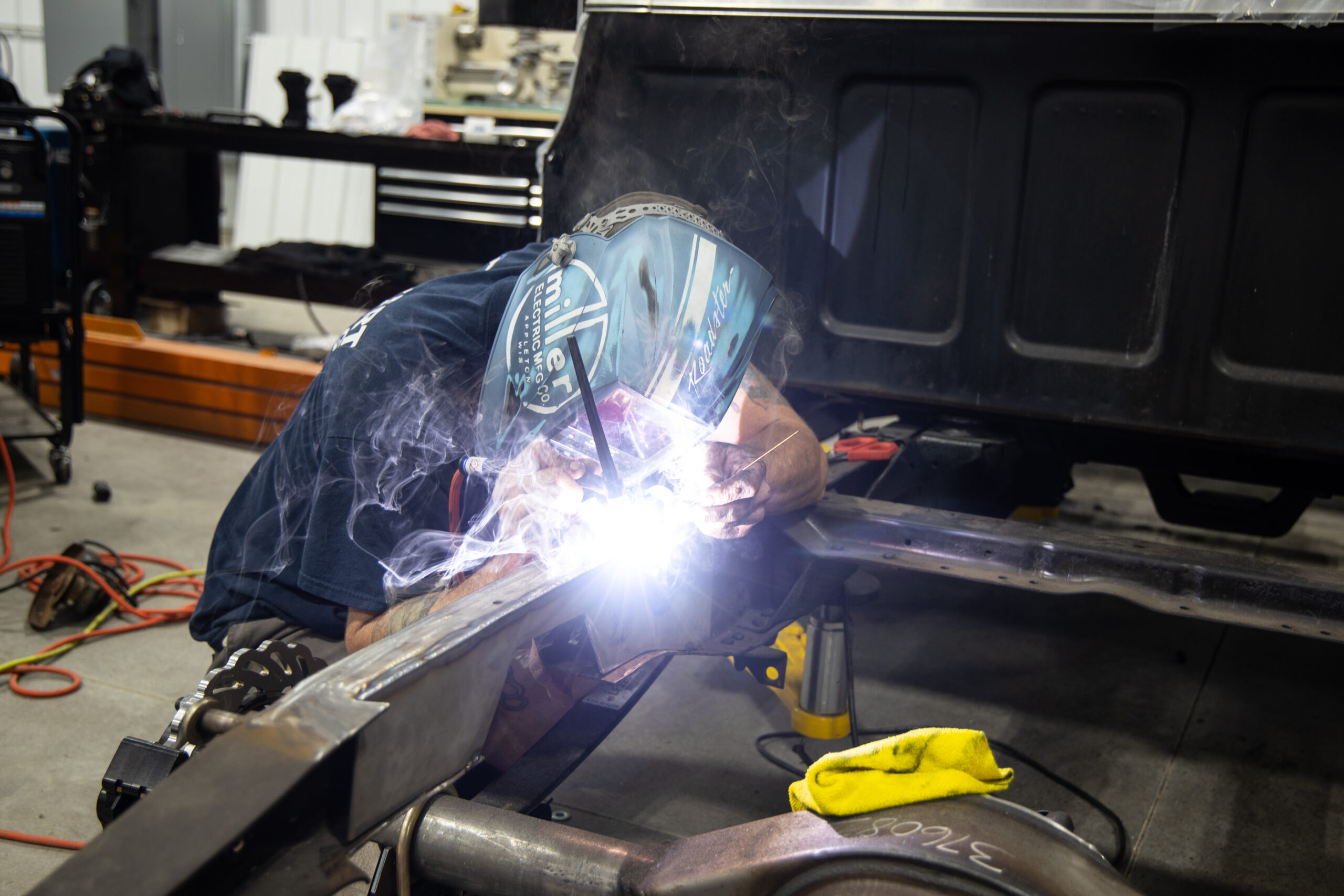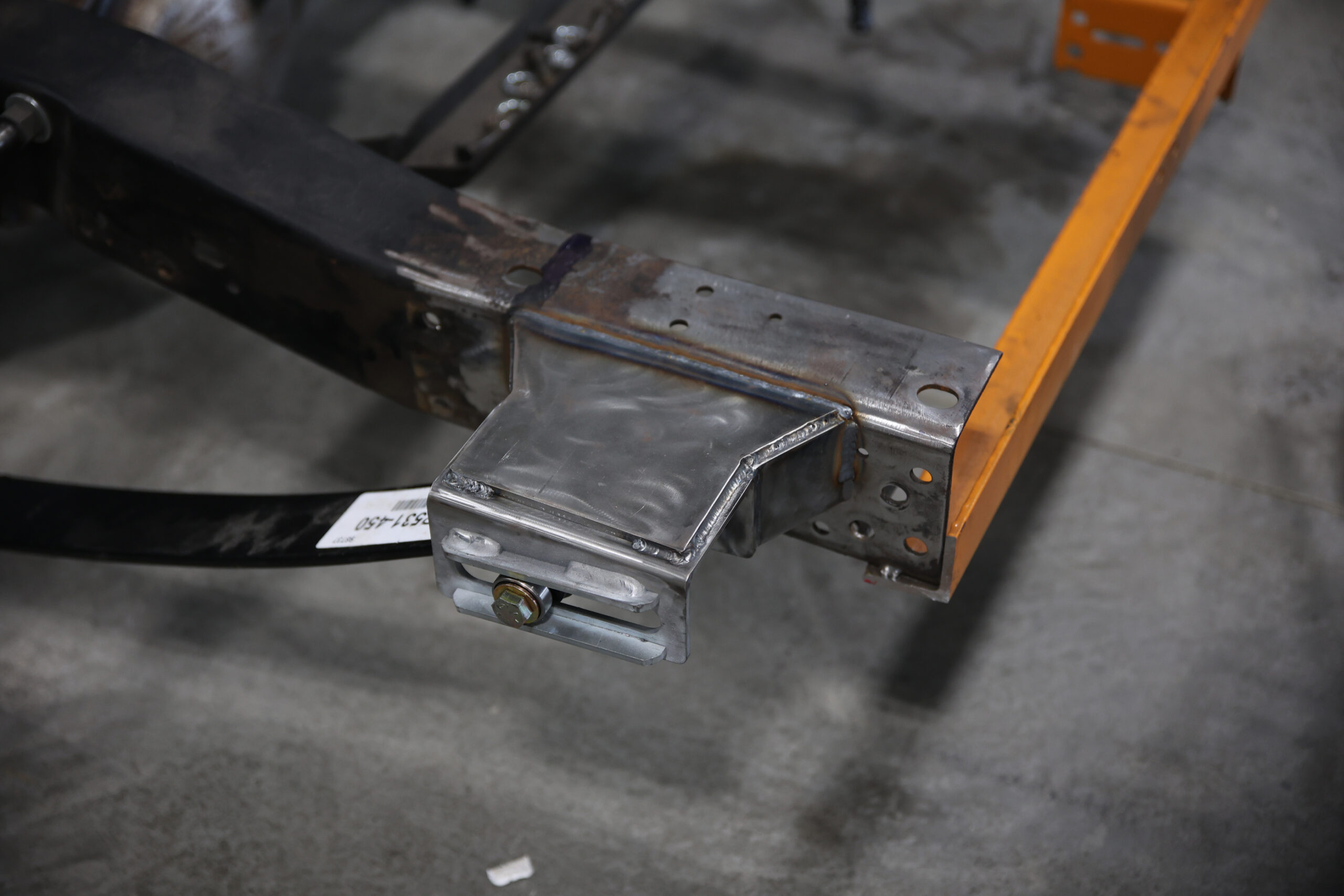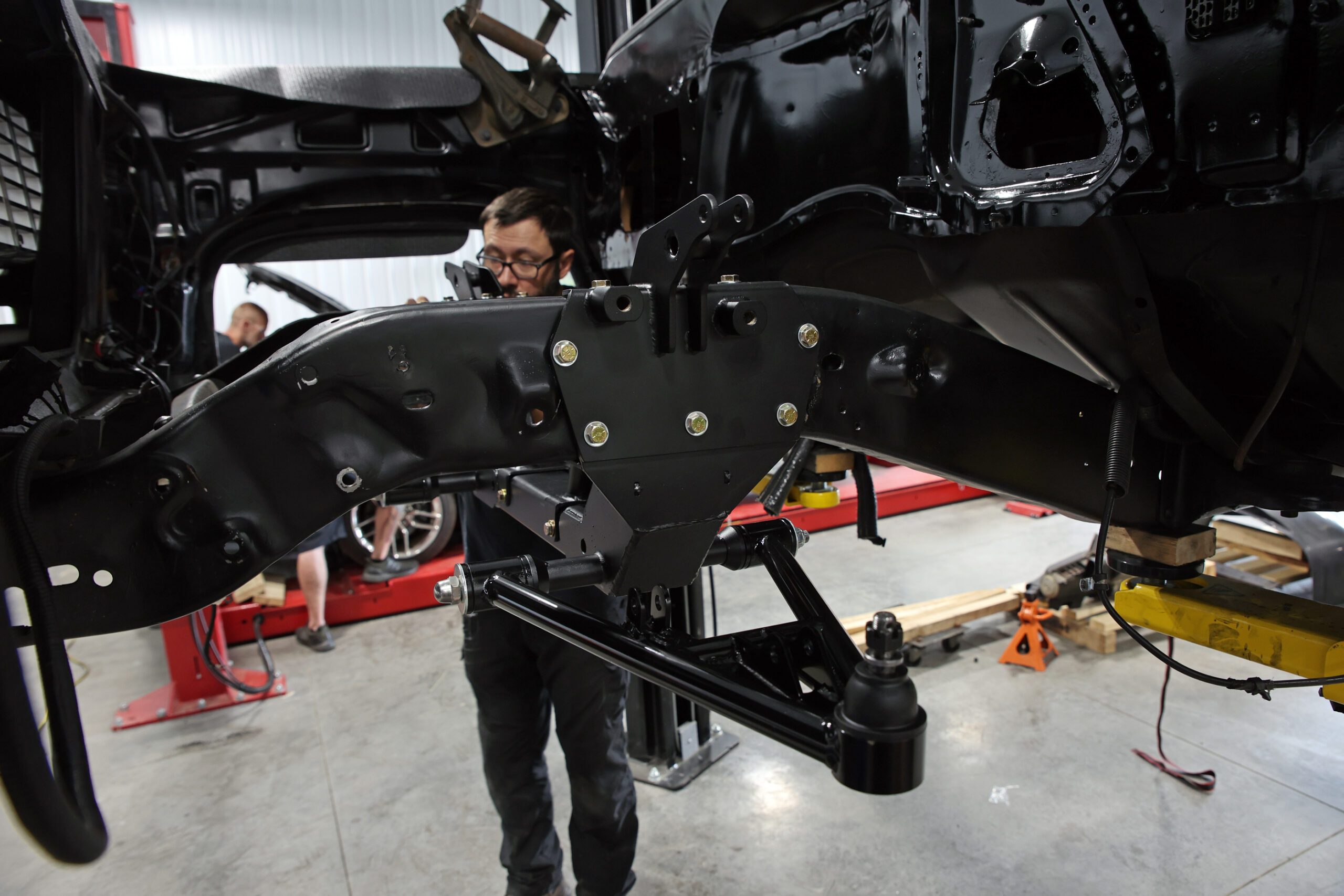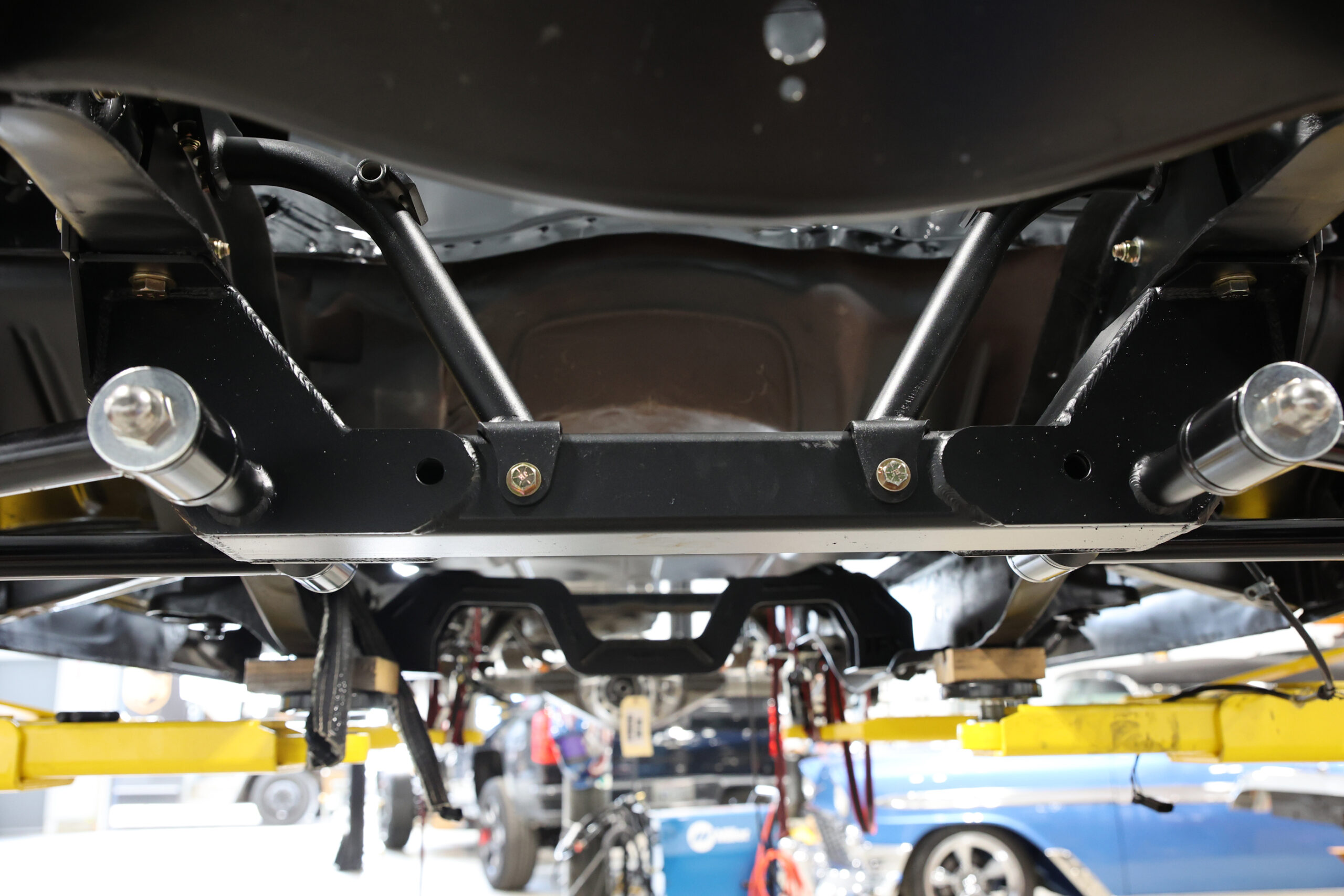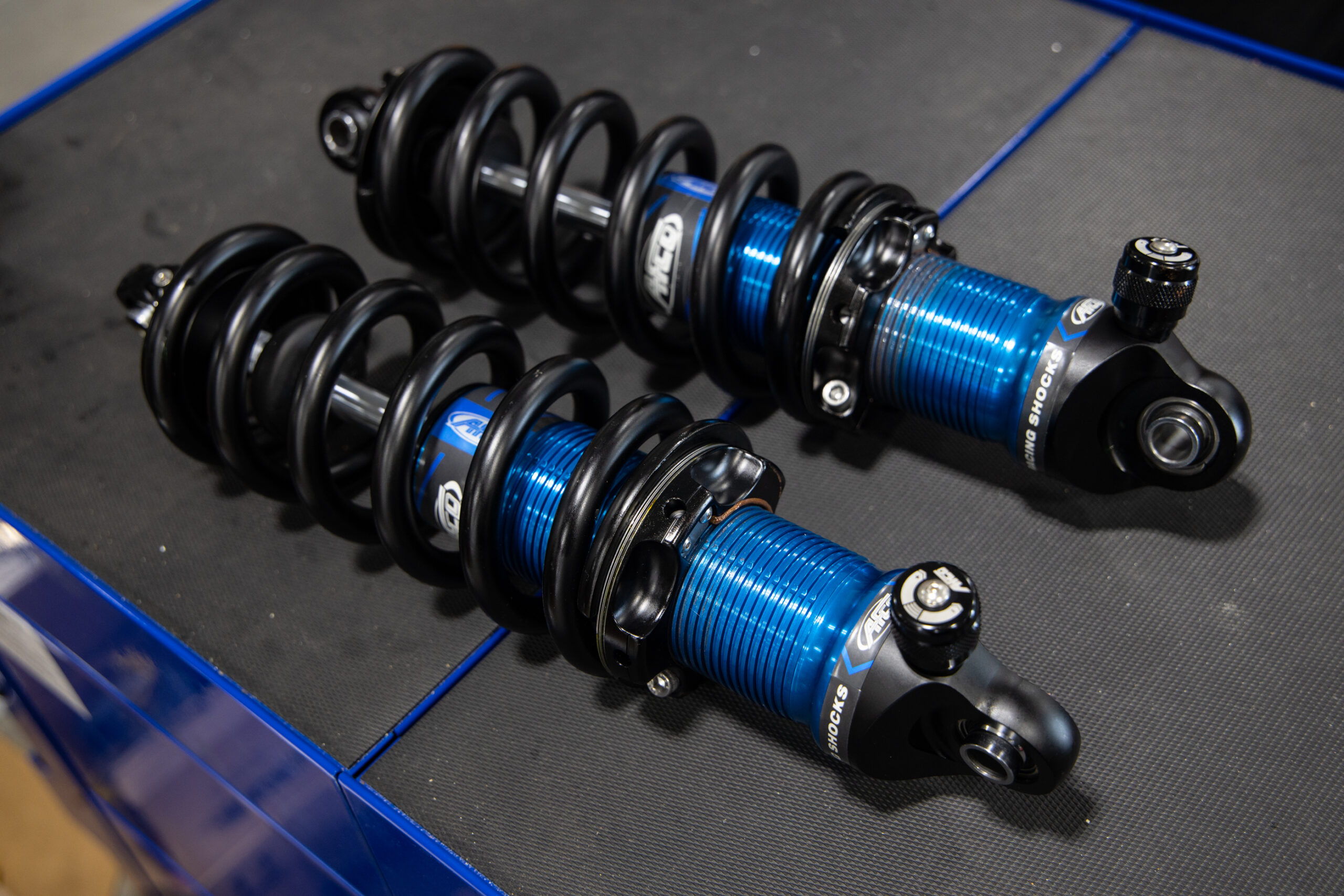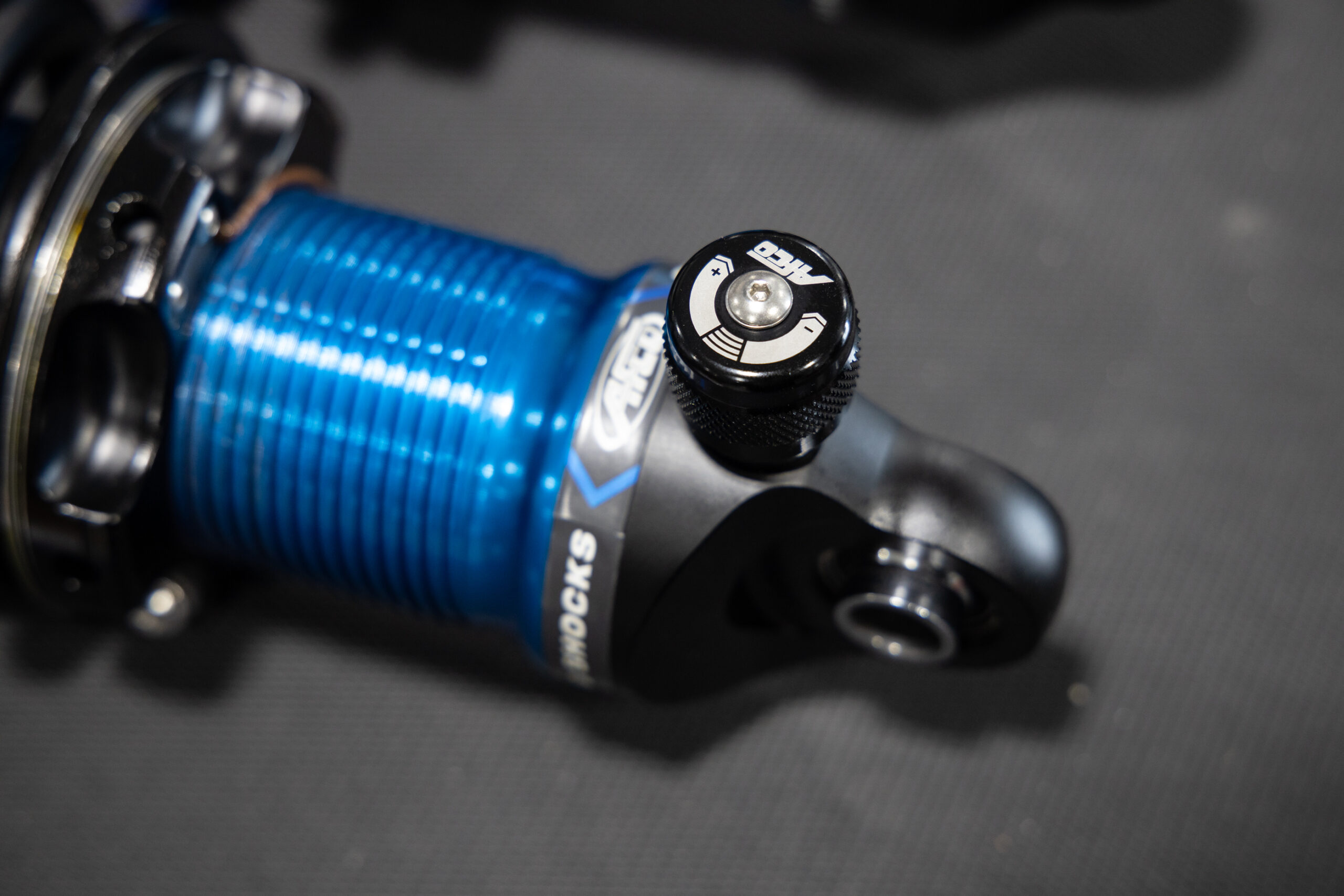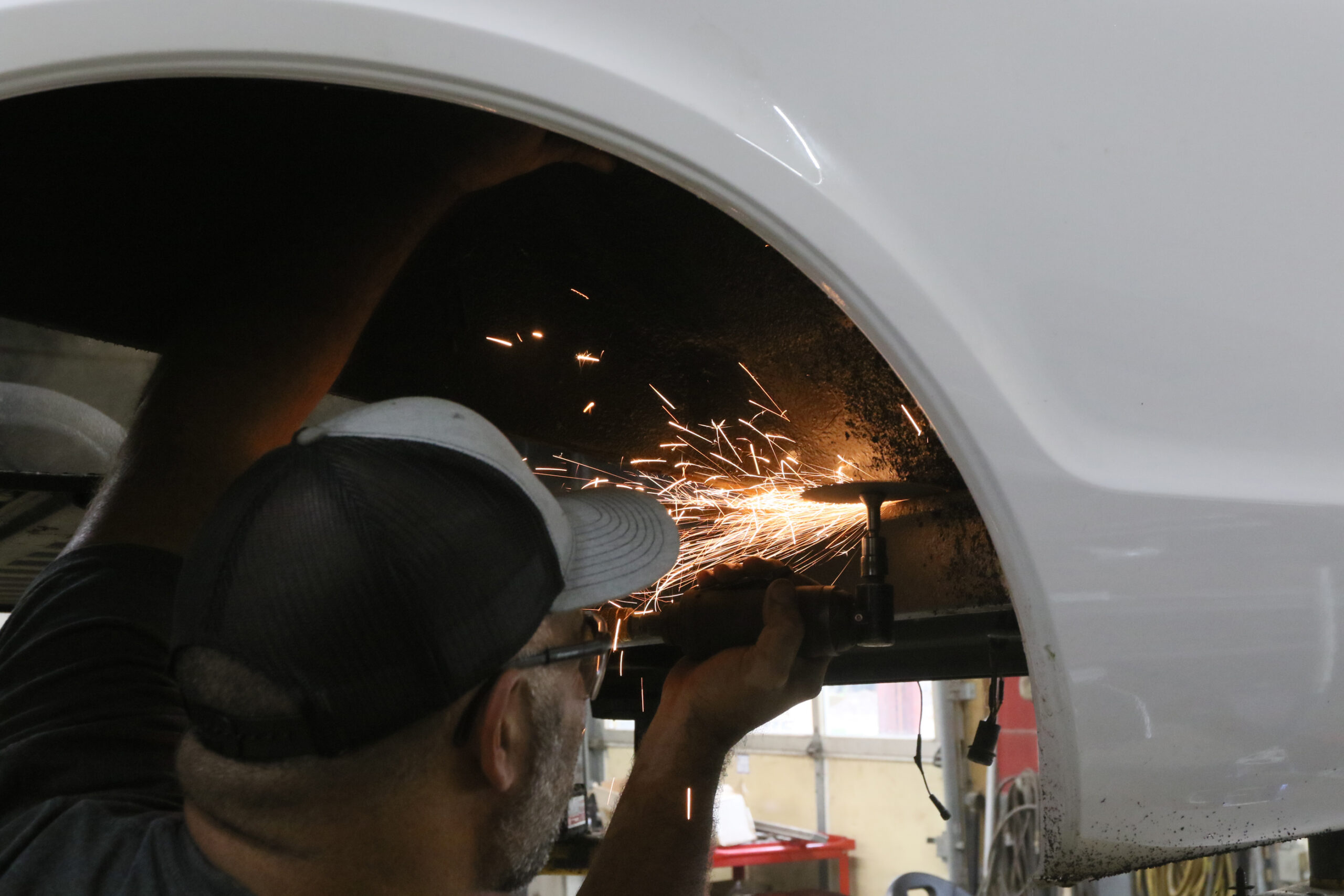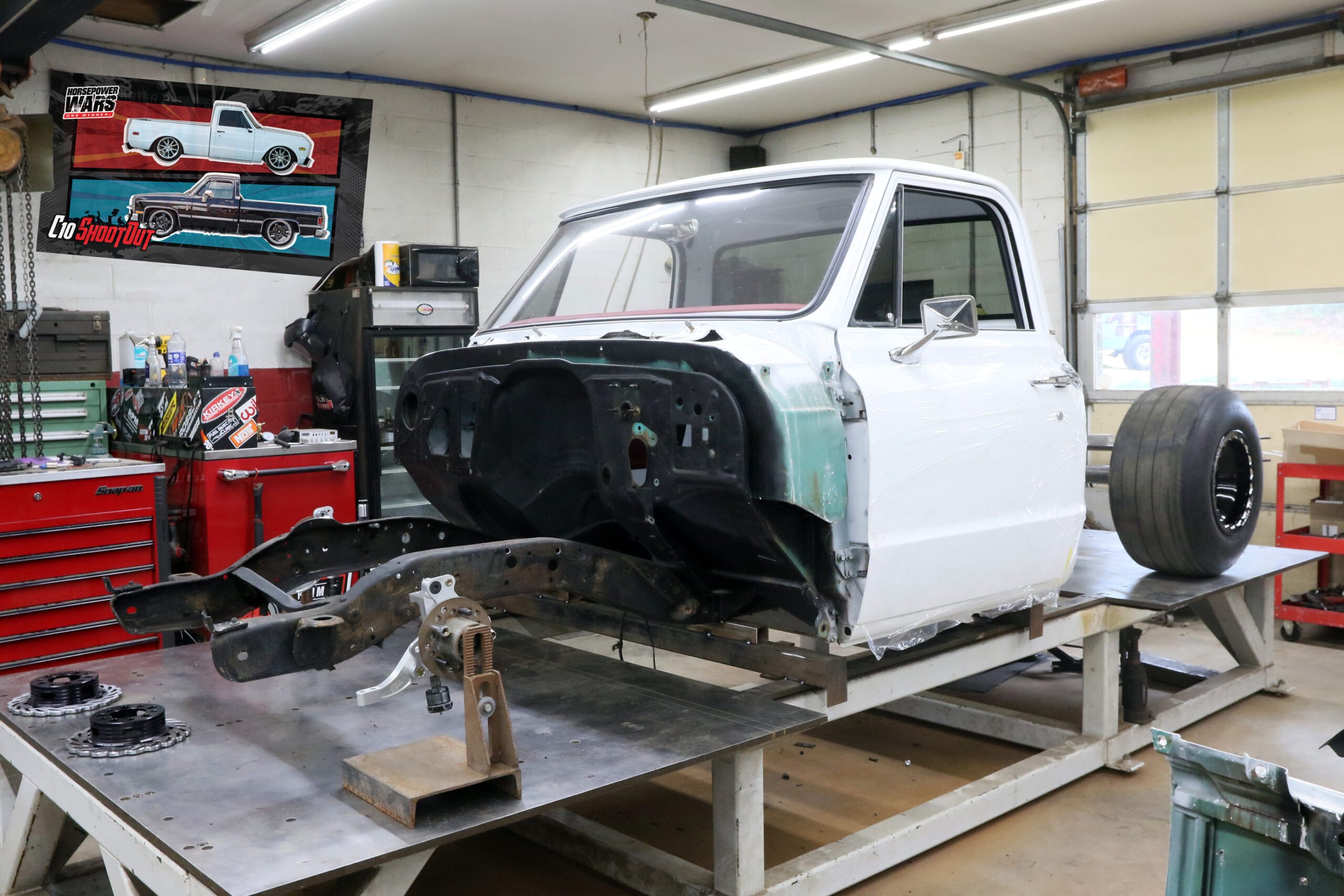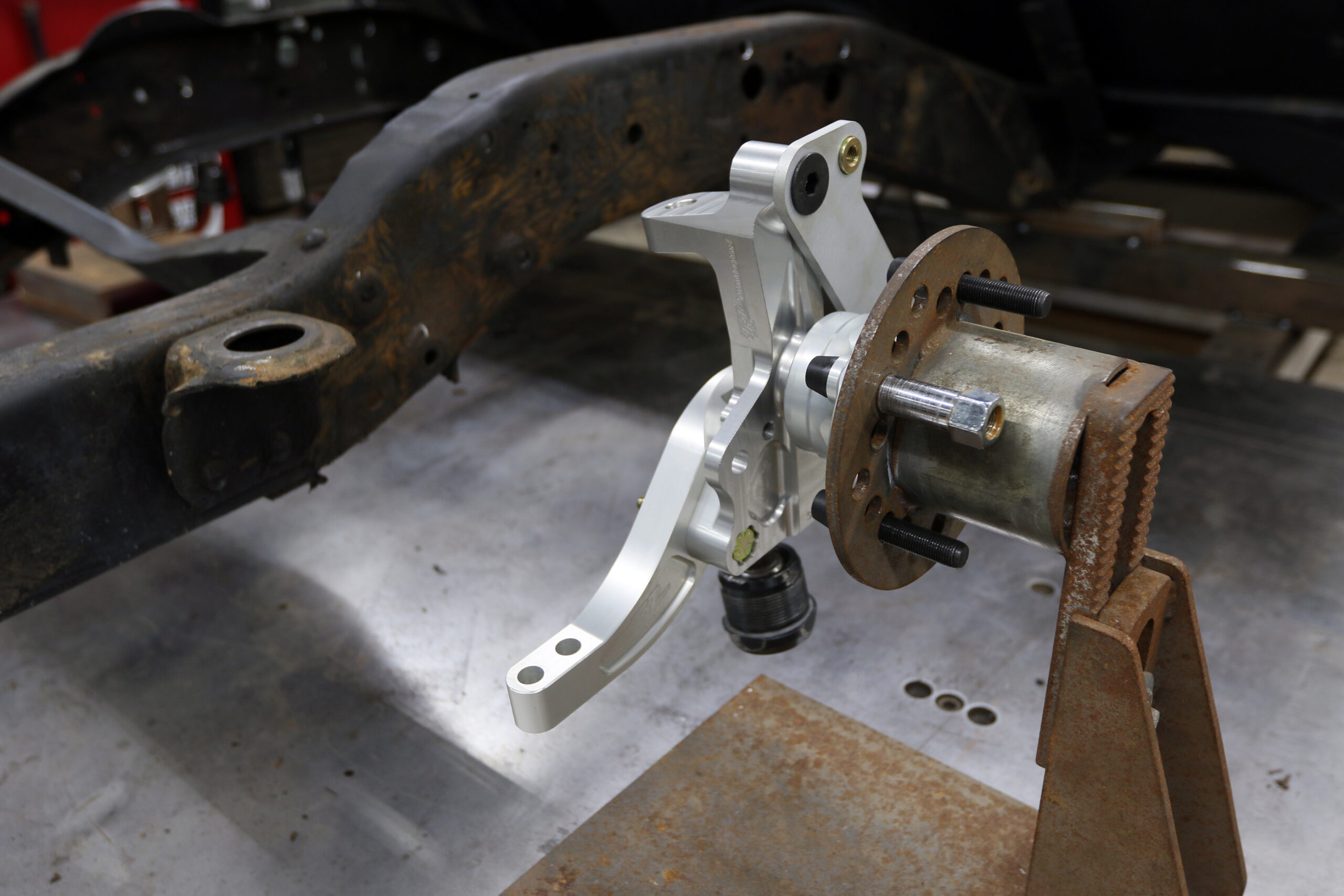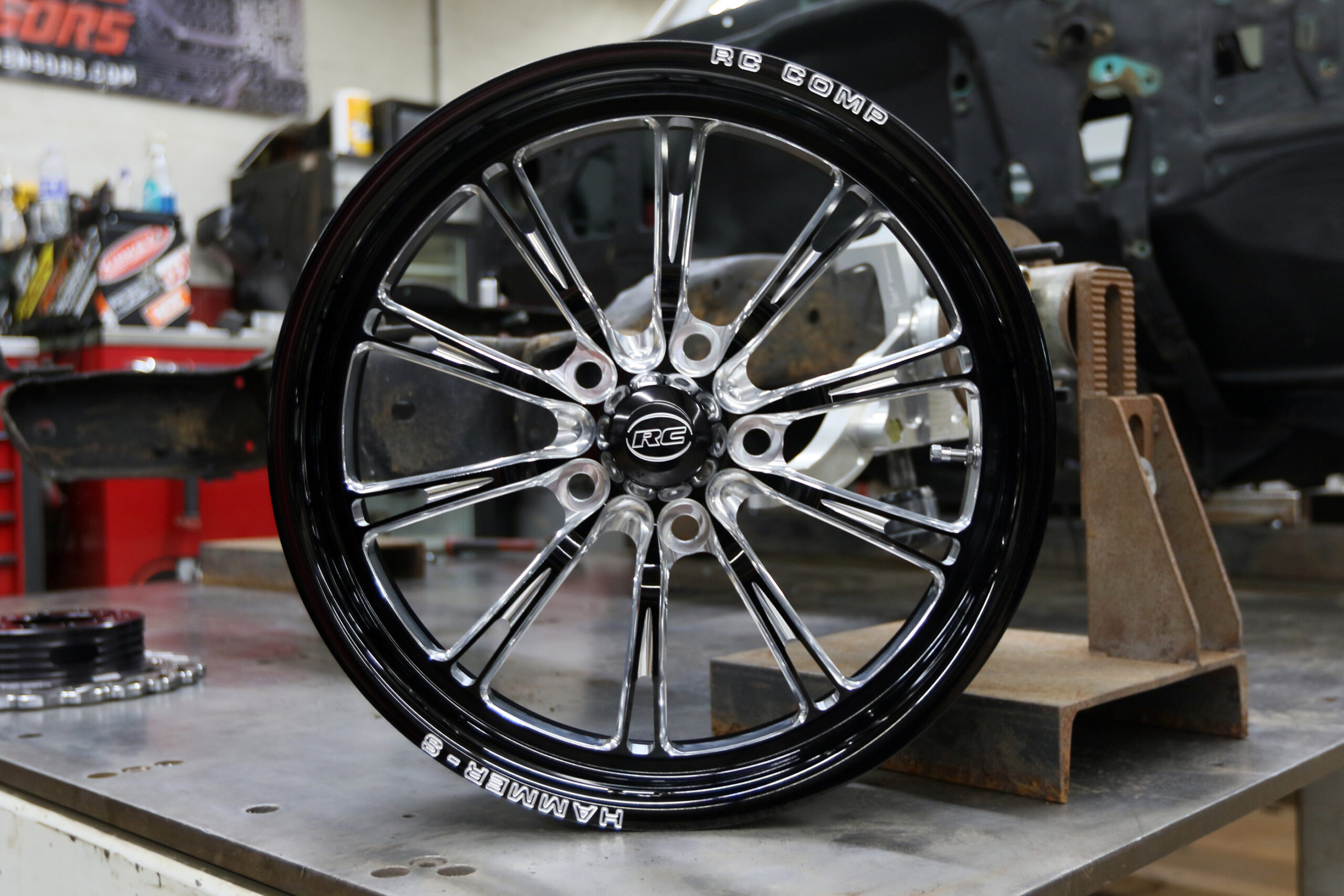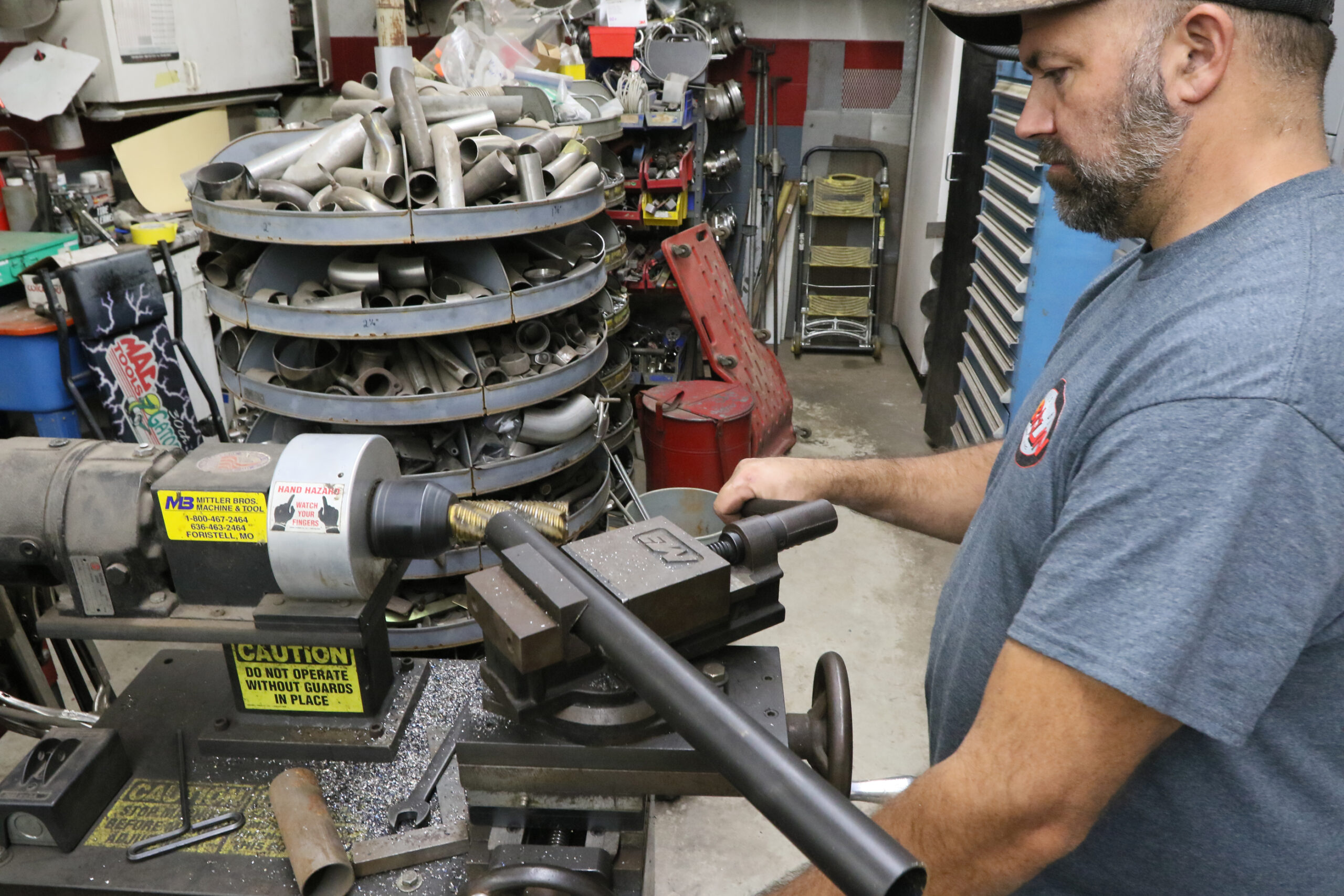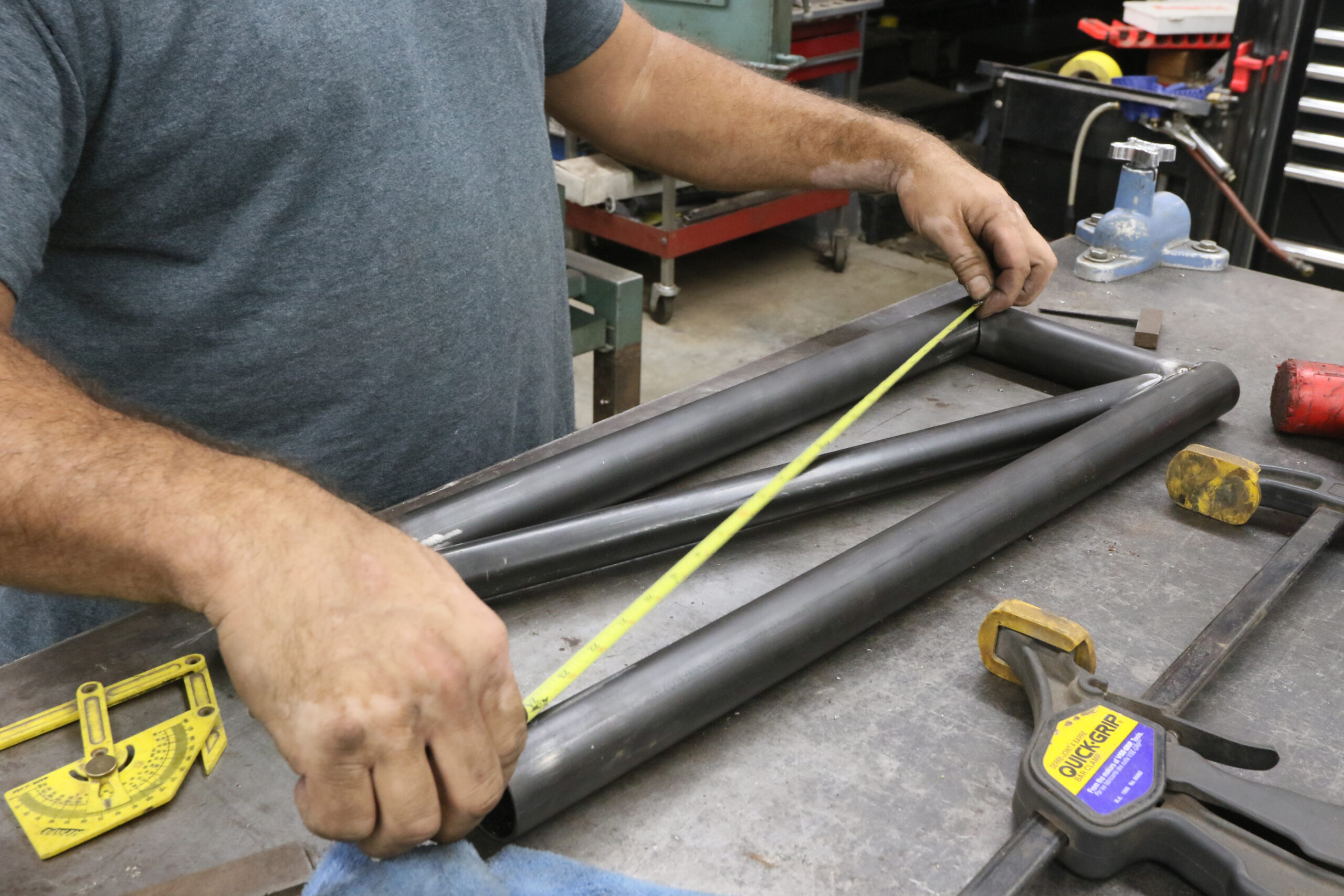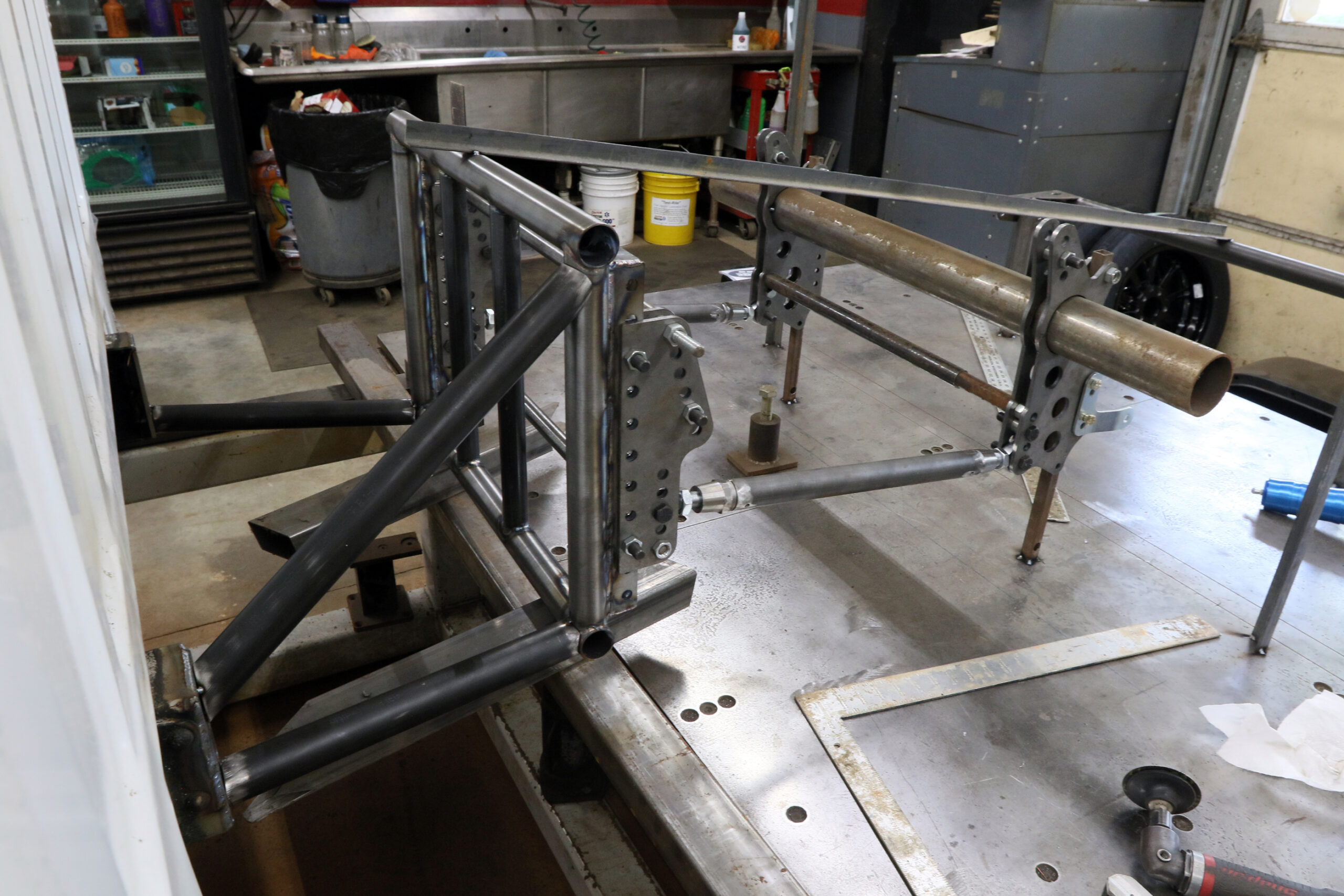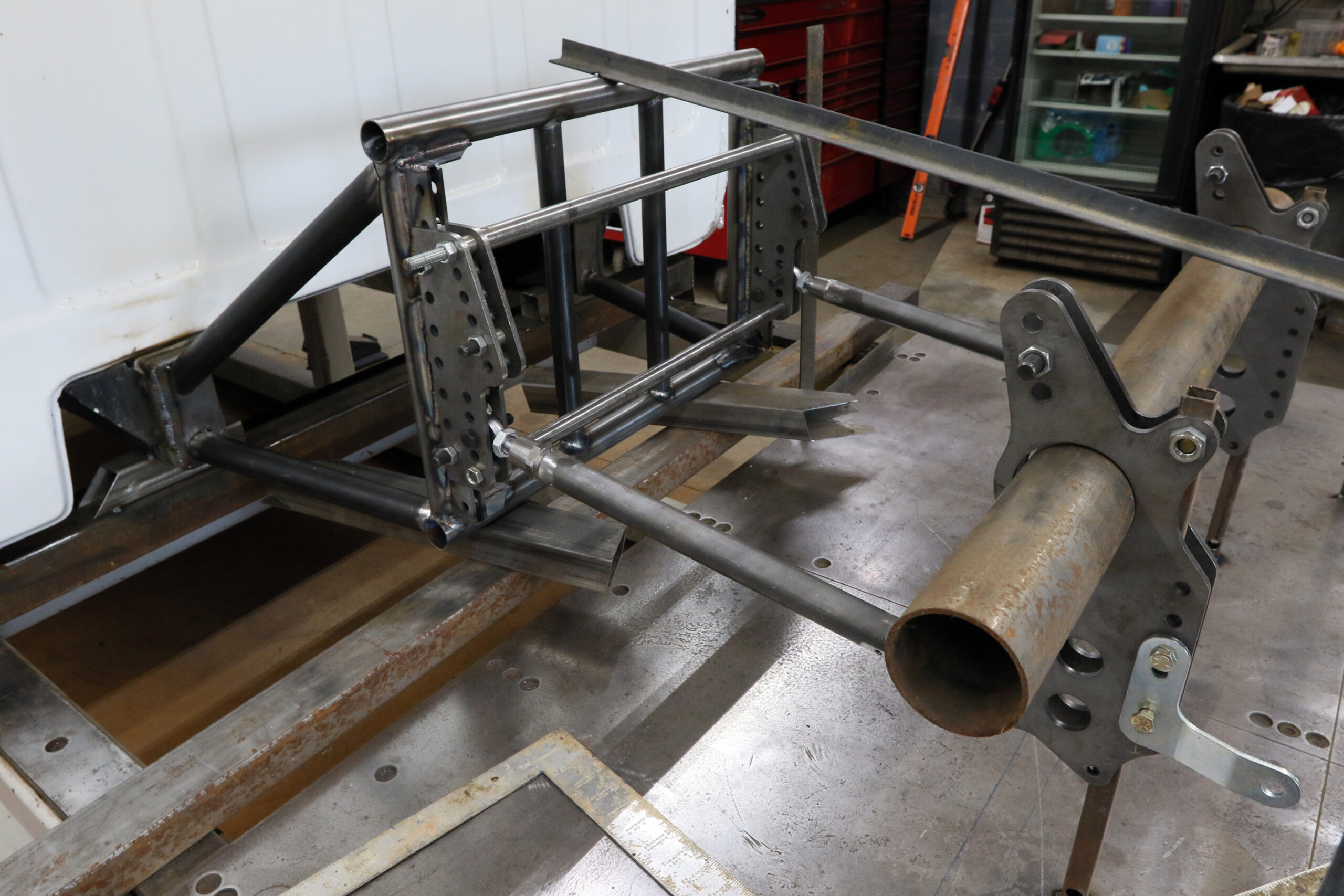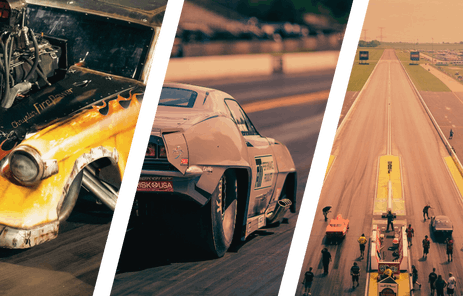On the first episode of the Horsepower Wars C10 Shootout, presented by Summit Racing, we recapped the past and set the stage for an epic drag n drive shootout using two C10 trucks – a ‘72 in the hands of Customs by Bigun and a ‘78 constructed by Big 3 Racing. The ‘72 will be powered by the winner of LS vs Coyote 3, an FFRE-built 5.0L Coyote with a single 76mm HPT turbo. The ‘78 will use the same turbo in front of the 5.3L LT, built by LME. Both engines are packing over 1,400 horsepower. But how will each harness that power through the chassis and suspension?
Big 10 Teardown & Bolt-up
Big 3 Racing made quick work of the ‘78, which, if you couldn’t tell from episode 1, did not have stock suspension or brakes. The 350ci small-block Chevy and 700R4 weren’t exactly stock but close to it. We’d bet the powertrain was swapped a long time ago for a typical crate engine to go with the 4-speed upgrade. The Pro Touring-style suspension would need to be ditched in favor of something with a little more travel, and drag racing-friendly spring rates.
The Build Plan
Big 3’s strategy was to keep it simple with a bolt-in front-end from TCI, and swap the Pro Touring leaf springs for a split monoleaf in the rear to go along with Caltracs traction bars, flip kit, and sliders straight from the Summit catalog. TCI’s IFS setup typically shaves off 85 pounds from the front-end, and has all the geometry dialed-in for bumpsteer, motion ratio, and instant center. This thing has been tested in thousands of trucks, so there should be no surprises here. As for the old CalTracs and leaf spring setup, well it’s been proven time and again by people like chassis-man Ron Rhodes. The benefit of this strategy is that you have parts that are capable, known starting points for chassis adjustments, and less adjustment points to dial in on race day.
To make sure all the power of the turbocharged 5.3L LT mill makes its way to the pavement, Big 3 had also planned to reinforce the stock chassis with some trusses. A roll bar was bent up to go through the back window, replaced by Lexan, and into the bed. All the metal for the chassis work on both trucks was provided by Competition Engineering, and was chromoly (1-⅝-inch, .83 wall and 1-¼-inch, .65 wall).
| Chassis | Reinforced stock |
| Steering | Rack and pinion conversion, included in TCI IFS |
| Front Suspension | TCI Engineering (PN 236-2202-00) IFS, AFCO springs and struts, Summit/QA1 HD Pro Coilover Brackets (PN QA1-MT103K), Competition Engineering Cable Style Travel Limiters (PN C2025) |
| Rear Suspension | Summit/Calvert CalTracs Truck Traction Bars (PN CLV-3204), Summit/Calvert Split Mono Leaf (PN CLV-321-34), Summit/Calvert Flip Kit (PN FLP-3134), Summit/Calvert Leaf Spring Sliders (PN SL-300CR), AFCO shocks, Competition Engineering Magnum Series Anti-Roll Bar (PN C2027) |
Coyote 10 Under the Knife
As the ‘72 was as stock as stock gets, and the factory trailing arm rear suspension was simply not going to work with this much power, it needed the most work in preparation for the competition. Bigun tore off the bed and the front-end once the Coyote 10 was on the chassis table. The chassis table allowed Bigun to mark off areas to start sketching out a plan for all the tubing that was to come.
Right off the bat, Bigun knew the Coyote’s width with the massive DOHC arrangement was going to be a bit of a challenge with steering and suspension components. It was also going to be essential that the open channel frame was reinforced or completely replaced in some cases. Unlike a modern truck chassis, the frame is not boxed (closed) and is a C-channel, which means it is very flimsy and will flex with just a little bit of weight applied to it with your foot.
The Fab Plan
The decision was made to swap the front suspension for a familiar first-gen Camaro, double A-arm arrangement, and to back-half the chassis with a 4-link with parts from Competition Engineering. There are many advantages of going to the Camaro front-end, but among them is access to a bounty of racing parts, including beefy ball joints and anti-bump-steer geometry. Plus, it was helpful in getting the stock chassis truck to sit like something that would normally roll out of Bigun’s shop. Same with the 4-link, which would give complete control of anti-squat, roll center, and every bit of adjustment needed to get the C10 to hook on any surface. Long travel shocks would be key to this as well. The downside is that those seemingly infinite adjustments also make it more difficult to tune in the tight window of our competition.
The plan for the cage was just as intricate as the back-half plan, as it tied together – the interior cage would come through the cab (not the window) to locate the top rail of the bed and keep the cage discrete. However, under the bed would lie a jungle gym of bars for the 4-link, along with the radiator like you’d see in a trophy truck.
| Chassis | Tubular back-half, reinforced front and mid |
| Steering | Summit/Strange rack and pinion (PN S3448), Summit/Borgeson shaft (PN BRG-110964) |
| Front Suspension | Bigun fabricated control arms, TRZ First Gen Camaro 2-inch Drop Spindle & Billet Steering Arm (PN328-2 & 303), AFCO springs and struts, Competition Engineering Cable Style Travel Limiters (PN C2025) |
| Rear Suspension | Competition Engineering Ultra Magnum Series 4-Link Kit (PN C2029), Anti-Roll Bar (PN C2027), Lower Coilover Shock Mount (PN C20247), Upper Coilover Shock Mount (PN C2046), Wishbone Rear Axle Locator (PN C2024), AFCO Big Gun X Radial Shocks (PN 3270BGX) and 110-lb, 12-inch springs |
Comparing the Builds
Starting with the suspension, both of these builds are using very different approaches to the rear suspension in particular. Inherently, leaf springs have a couple of weaknesses: spring wrap-up and setting pinion angle and preload. The use of CalTracs is what controls leaf spring wrap-up and corrects the pushing point (or instant center) – to push the car with the tire, as John Calvert would say. Spring wrap-up, if you are not familiar, is the phenomenon where the leaf springs twist, and it raises the pinion angle – breaking traction. The connection point and preload adjustments are what set the instant center using traction bars, unlike the old slapper bars, which only helped with spring wrap-up. The split mono-leaf is another game changer. Overlapping the front and back half at different thicknesses, and changing the arch for the ride height, they can dial in the spring rate exactly as you need it. They are also lighter.
The benefit of a 4-link is that you can set the instant center wherever you want it, have total control of the pinion angle, and you have seemingly infinite adjustments and no spring wrap-up to deal with. Unfortunately, that infinite adjustment can get you in trouble, and you can easily get out in left field before you even hit the track. Things like the length of the control arms, the location of the control arm mounting points, how you locate the axle (a wishbone in Bigun’s case), and how you support the rear half of the truck all play a major role in how the suspension works. And all of this is reactive to the wheelbase, weight bias, and other unique factors of each chassis. At this power level, leaf springs have proven equally as effective as a four-link. And on race day, it won’t be about the ultimate potential of the vehicle, but who can dial in the truck quickest – with only one day to do it – and adjust to any conditions the track may ocur.
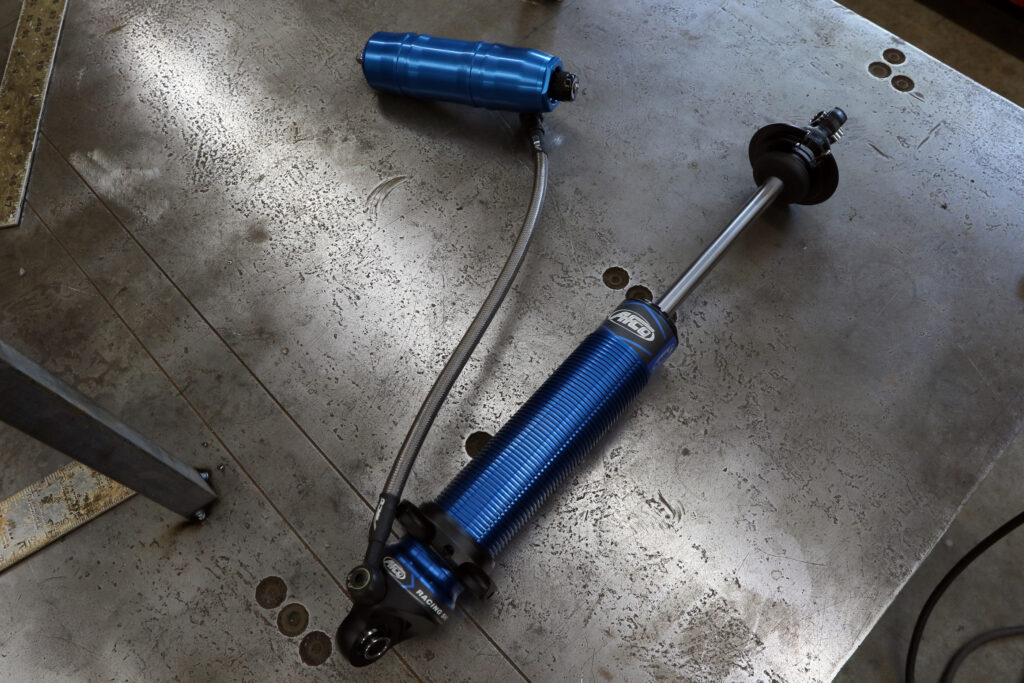
As for the engines, it’s anyone’s guess because we are going to take two engines that were dead even on the engine dyno and give each a larger turbo. We are expecting a minimum of 100-200 horsepower difference. Will the larger cubic inches play to the LT’s advantage when spooling a larger turbine? Or will the higher-flowing Coyote heads just eat up the extra CFM? Can an aluminum L83 block even hold together with more power?
On the next episode, we’ll follow the Big 10 build at Big 3 Racing to near completion and race day.
Horsepower Wars C10 Shootout would like to thanks its sponsors for making this possible including Summit Racing, Holley (Holley EFI, Simpson, etc), Manley Performance, Diamond Racing Pistons, COMP Cams, Moroso Performance Products, Total Seal, Automotive Racing Products (ARP), Cometic Gaskets, AMSOIL, Vibrant Performance, HPT Turbochargers, ICT Billet, ATI Performance, Meziere Enterprises, AFCO Racing, Optima Batteries, Old World Industries/Peak, Strange Engineering, SPAL, Auto Metal Direct, and Wiles Driveshaft.
You might also like
Lucas Oil Sportsman Classes To Be Run Until Completion Thursday At NHRA Finals
Lucas Oil Sportsman racers face a unique challenge at the NHRA Final. All sportsman classes will be completed on Thursday due to weather.





